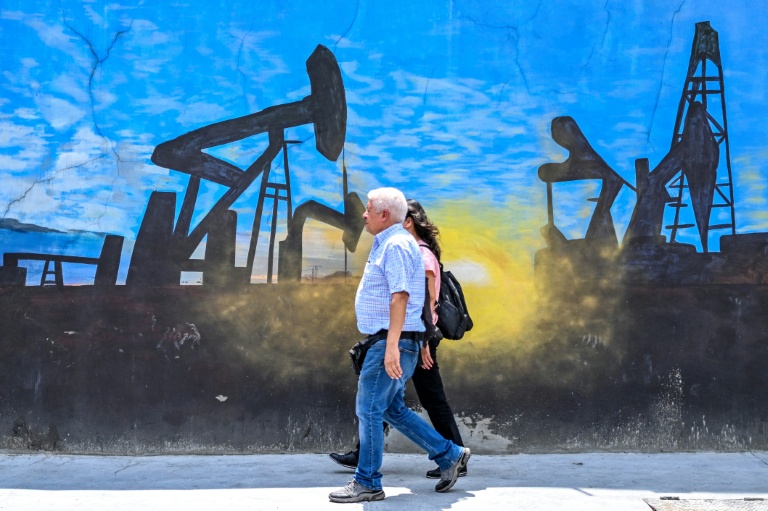Los Angeles (AFP) – A powerful storm lashing California on Monday has left at least three people dead and caused devastating mudslides and flooding, after dumping months’ worth of rain in a single day.
More than ten inches (25 centimeters) of rain was recorded in one part of Los Angeles County in 24 hours of downpour, with no letup forecast in the coming days.
Mountainsides collapsed in the tony Hollywood Hills area, burying cars and damaging houses, while in nearby Beverly Glen, a mudslide knocked one home off its foundation.
The house’s contents — including a piano — were swept onto the road in the swanky neighborhood, where homes routinely change hands for millions of dollars.
“It sounded like lightning,” resident Dave Christensen told broadcaster KTLA.
“When I went out to…see what was there, I thought I saw a water heater where the house used to be and sure enough it was because the house had slid off the hill and into the road.”
The Los Angeles Fire Department said it had recorded 130 floods and 39 debris flows, with the risk of more to come as Monday’s rain ramps back up.
The precipitation comes from a line of moisture rolling in from the Pacific Ocean, a so-called atmospheric river dumping billions of gallons (liters) of water.
Forecasters at the National Weather Service (NWS) said much more rain was expected, and warned of “life-threatening flash flooding.”
“An ongoing atmospheric river event will continue to produce multiple rounds of heavy rainfall to parts of southern California including the Los Angeles Basin through Tuesday,” the agency said.
“Dangerous small streams, urban and river flooding, mudslides, strong winds and high surf will all be possible.”
Up to eight more inches of rain could fall, the agency said, taking the running total in some areas to 14 inches.
The extreme weather led California Governor Gavin Newsom to declare a state of emergency for a large part of Southern California.
“This is a serious storm with dangerous and potentially life-threatening impacts,” he said.
Downtown Los Angeles saw one of its wettest days ever on Sunday, with more than four inches of rain, according to the local NWS office.
“It is vital now more than ever, stay safe and off the roads,” Mayor Karen Bass said.
“Only leave your house if it is absolutely necessary.”
Travel was tricky throughout the region, with highways jammed and city streets flooded.
Problems with drainage regularly leave intersections flooded in Los Angeles, where infrastructure struggles to cope with even moderate amounts of rain.
The weather was causing difficulty for air travel, with flights cancelled and delayed out of Los Angeles Airport, according to Flightaware.com.
Over the mountains, the rain was falling as snow, with parts of the Sierra Nevada range in line for another blanketing, bringing the weekly total to around 3.5 feet (more than a meter).
– ‘Pineapple express’ –
The atmospheric river is part of a phenomenon known as a “pineapple express,” a weather system that brings tropical moisture from the ocean near Hawaii.
The NWS described it as “the largest storm of the season.”
The disruption was widespread, with San Francisco and the surrounding Bay Area registering wind gusts as high as 102 miles (164 kilometers) per hour Sunday, the local NWS said.
Three people were killed in separate incidents after trees were felled by the storm, with one dead in Santa Cruz county, one in Yuba county and one in Sacramento, officials said.
Over 300,000 customers across the state were without power on Monday afternoon, according to electricity supply tracker PowerOutage.us.
The US West Coast endured a difficult winter last year when a series of atmospheric rivers dumped billions of gallons of rain and snow.
That brought widespread flooding and travel disruption, as well as problems with the power grid.
But it also replenished severely depleted reservoirs, which had sunk to record lows after years of intense drought.
While wet weather is not unusual during California’s winters, scientists say human-caused climate change is altering the planet’s weather patterns.
This makes storms wetter, more violent and unpredictable, while causing dry periods to be hotter and longer.




